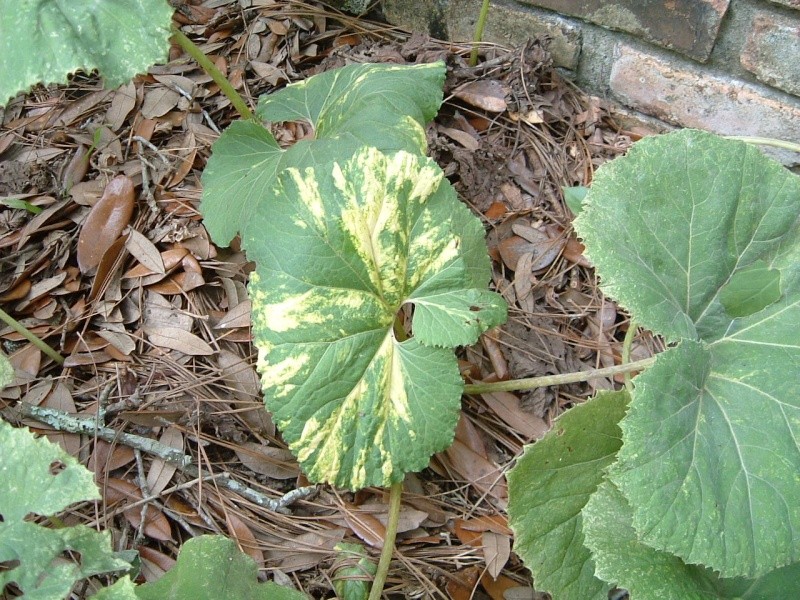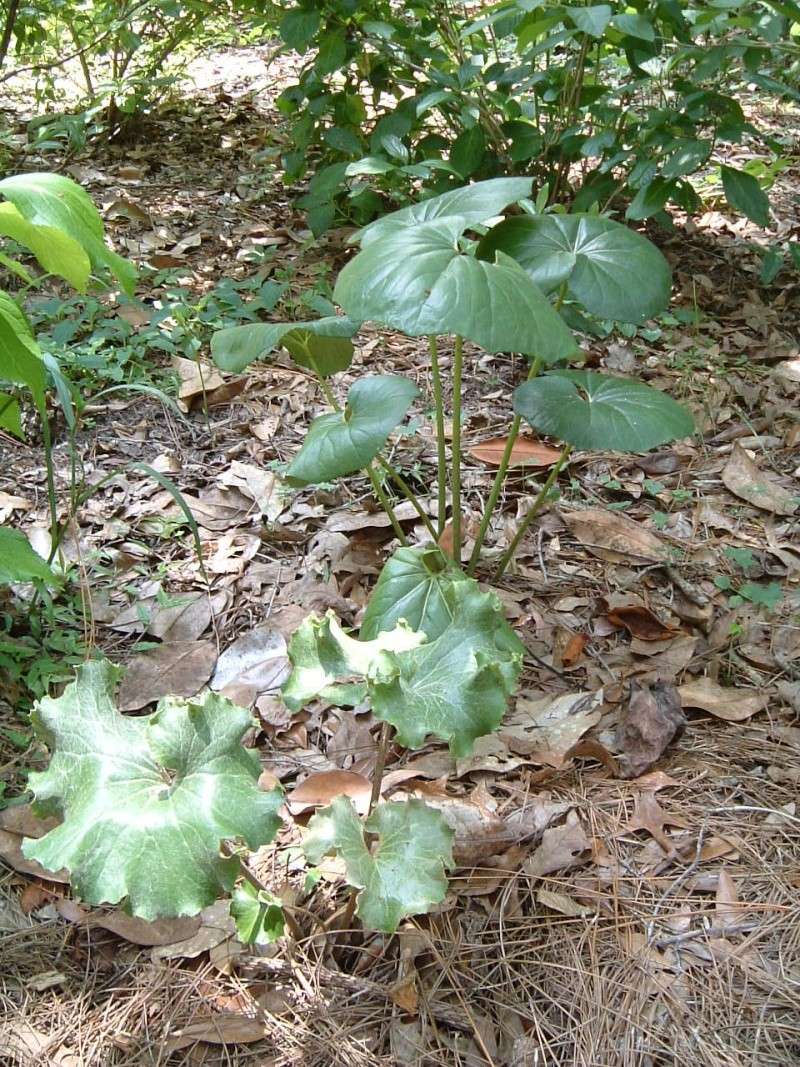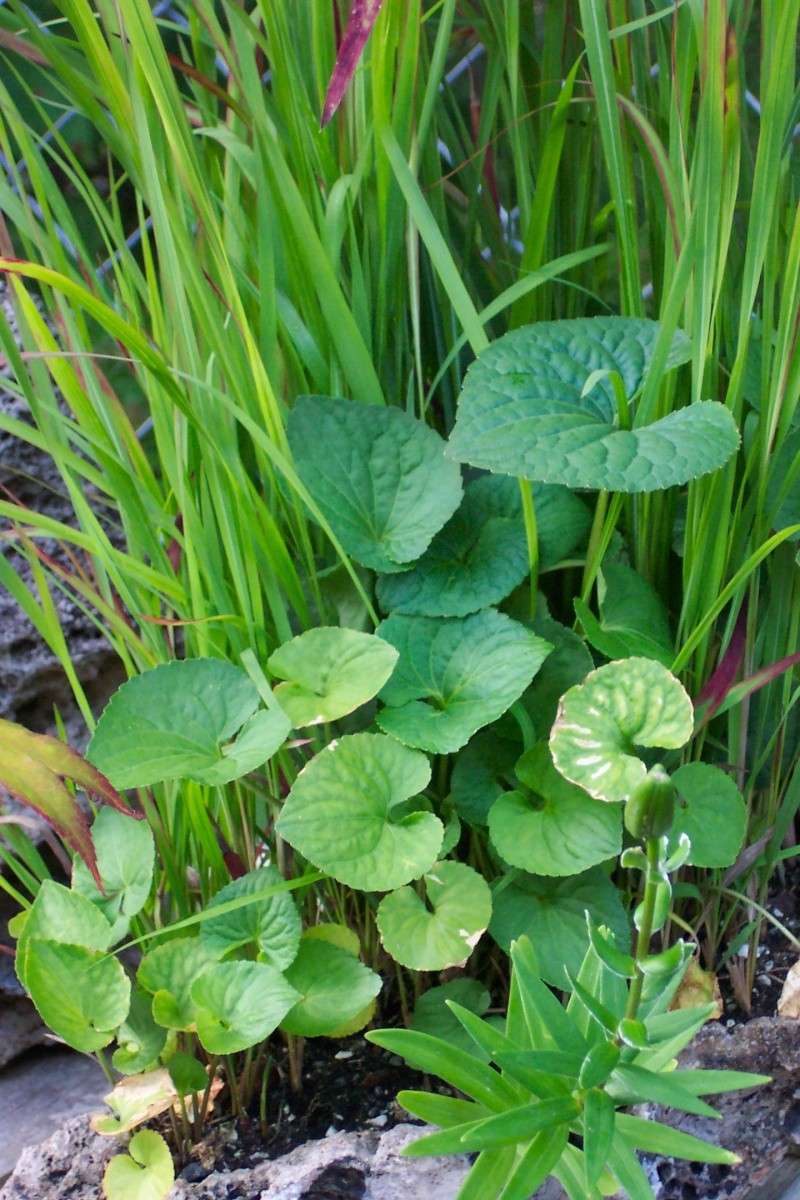Butter burr
+2
Mike Jones
Dave Martin
6 posters
Page 1 of 1
 Butter burr
Butter burr
This is an often seen British wild flower, common along the verges of the UK. It was used in times of yore to wrap butter in, the root being powdered and used to remove spots and skin blemishes!
I decided to have a go at turning it into an accent 3 years ago, you should know that the leaves of the plant can grow to an astonishing 36 inches in diameter (Source - Readers Digest, Field Guide to Wild Flowers of Britain), to be fair I have never seen them that large although it is common to see them 12 inches across.
It is a member of the Ligularia family (10/10 for Chris Thomas in recognising that!).

The pot is a Walsall Ceramics pot.
It is shown on a natural sized leaf collected from the verge.
I decided to have a go at turning it into an accent 3 years ago, you should know that the leaves of the plant can grow to an astonishing 36 inches in diameter (Source - Readers Digest, Field Guide to Wild Flowers of Britain), to be fair I have never seen them that large although it is common to see them 12 inches across.
It is a member of the Ligularia family (10/10 for Chris Thomas in recognising that!).

The pot is a Walsall Ceramics pot.
It is shown on a natural sized leaf collected from the verge.

Dave Martin- Member
 Re: Butter burr
Re: Butter burr
As I said elsewhere Dave; a beautiful image and superbly proportioned sat on a full size leaf. I still like it very much.
Mike
Mike

Mike Jones- Member
 Re: Butter burr
Re: Butter burr
Great shot of a great accent. I love the use of the larger leaf in the shot, thanks for the background information too.

Jim Doiron- Member
 Re: Butter burr
Re: Butter burr
Unfortunately Russell it doesn't or rather hasn't.
An interesting fact is that only male plants is common throughout the UK and female plants are usually found only in the North of England in Cheshire, Yorkshire, Lancashire Derbyshire and Lincolnshire. The male plant can produce female flowers at times.
An interesting fact is that only male plants is common throughout the UK and female plants are usually found only in the North of England in Cheshire, Yorkshire, Lancashire Derbyshire and Lincolnshire. The male plant can produce female flowers at times.

Dave Martin- Member
 Re: Butter burr
Re: Butter burr
That's interesting, Dave.
I didn't realize that about the flowers. I saw it in Japan, and assumed it was native there. They call it "fukitampopo", and pickle the flowers or leaf stems - I can't remember. I do remember seeing it as an early spring accent with the flowers poking up through the moss. I had no idea the leaves would reduce like this. We have a variegated form at the botanical garden here, so I'll hit up my friend there for a start.
R
I didn't realize that about the flowers. I saw it in Japan, and assumed it was native there. They call it "fukitampopo", and pickle the flowers or leaf stems - I can't remember. I do remember seeing it as an early spring accent with the flowers poking up through the moss. I had no idea the leaves would reduce like this. We have a variegated form at the botanical garden here, so I'll hit up my friend there for a start.
R

Russell Coker- Member
 Re: Butter burr
Re: Butter burr
Russell,
this a member of the same family Ligularia, I think the Japanese one is Farfugium and the spotted one is commonly called the Leopard plant I believe. I think it has a yellow dandelion type flower whereas Butter burr has a spike of flowers which looks like individual cauliflower florets(the only way I can describe t having only seen a drawing).
Hope it helps
If you can cadge some of the Farfugium your lucky.
this a member of the same family Ligularia, I think the Japanese one is Farfugium and the spotted one is commonly called the Leopard plant I believe. I think it has a yellow dandelion type flower whereas Butter burr has a spike of flowers which looks like individual cauliflower florets(the only way I can describe t having only seen a drawing).
Hope it helps
If you can cadge some of the Farfugium your lucky.

Dave Martin- Member
 Re: Butter burr
Re: Butter burr
Thanks Dave.
We had both, Petasties and Farfugium, and used them as accents. But I never saw Petasites used except when it was blooming in the spring. Farfugium (tsuwabuki) blooms in the fall with showy yellow flower on a tall stalk - and smells bad too! It also dwarfs nicely in a pot, and is a popular plant with MANY leaf forms and variegation. Petasites was the one that was pickled - or fried as tempura - or both - hell, I can't remember.
Also, the Petasites went dormant by late summer. It does that here too, but sooner. Does yours? I'll try to get a picture of the variegated one, it's really pretty.
I don't know what that means.
We had both, Petasties and Farfugium, and used them as accents. But I never saw Petasites used except when it was blooming in the spring. Farfugium (tsuwabuki) blooms in the fall with showy yellow flower on a tall stalk - and smells bad too! It also dwarfs nicely in a pot, and is a popular plant with MANY leaf forms and variegation. Petasites was the one that was pickled - or fried as tempura - or both - hell, I can't remember.
Also, the Petasites went dormant by late summer. It does that here too, but sooner. Does yours? I'll try to get a picture of the variegated one, it's really pretty.
Dave Martin wrote:If you can cadge some of the Farfugium your lucky.
I don't know what that means.

Russell Coker- Member
 Re: Butter burr
Re: Butter burr
Thanks Russell,
I love the variegated Petasites it is native here, as regards it going dormant I am ashamed to say that my observation has never extended to that, although I have a feeling it remains 'in the green' all year round.
Farfugium varieties are a favourite of mine, but seem difficult to keep for some reason, probably through my own ineptitude.
Thanks for the pics.
I love the variegated Petasites it is native here, as regards it going dormant I am ashamed to say that my observation has never extended to that, although I have a feeling it remains 'in the green' all year round.
Farfugium varieties are a favourite of mine, but seem difficult to keep for some reason, probably through my own ineptitude.
Thanks for the pics.

Dave Martin- Member
Page 1 of 1
Permissions in this forum:
You cannot reply to topics in this forum










